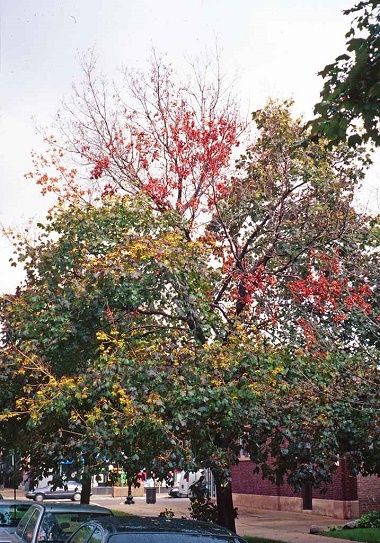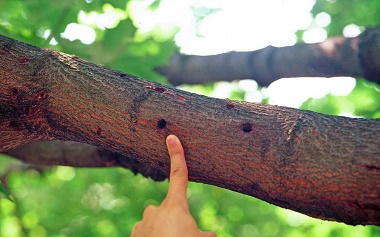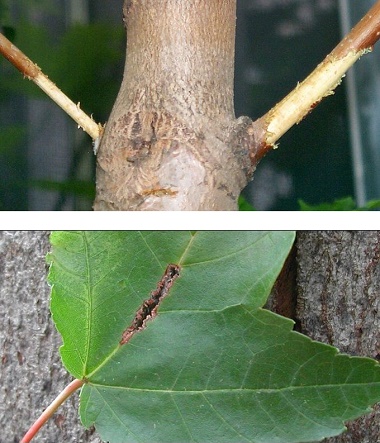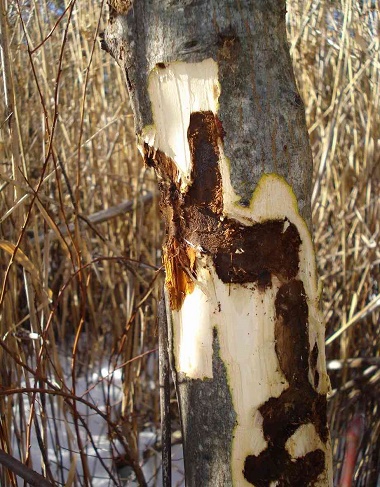What to look for in host trees
Asian Longhorned Beetle - Tree Symptoms

There are several identifiable signs of injury left by each stage of the beetle’s development in and on trees, some of which can be seen year round.
Trees stressed by Asian longhorned beetle may exhibit early fall color by mid-summer, and weakened branches can break causing liability issues for people and property.
The beetle prefers maple species (Acer spp.), including boxelder, Norway, red, silver, and sugar maples. Other preferred hosts are birches, Ohio buckeye, elms, horse chestnut, and willows. Occasional to rare hosts include ash, European mountain ash, London planetree, mimosa, and poplars.
Eradication attempts and quarantines have been successful regarding this pest, especially when it was found in the beginning stages of infestation.
Adult beetles often reinfest the same host tree from which they emerged. The damage to the tree can be tremendous, and can build up over a number of years, eventually killing the tree or weaken it to a point where limbs begin to break or other structural failure occurs.







